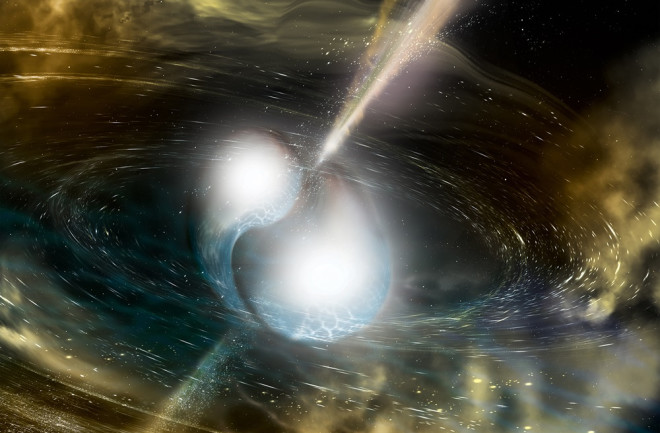The dead cores of two stars collided 130 million years ago in a galaxy somewhat far away.
The collision was so extreme that it caused a wrinkle in space-time — a gravitational wave. That gravitational wave and the light from the stellar explosion traveled together across the cosmos. They arrived at Earth simultaneously at 6:41 a.m. Eastern on August 17.

